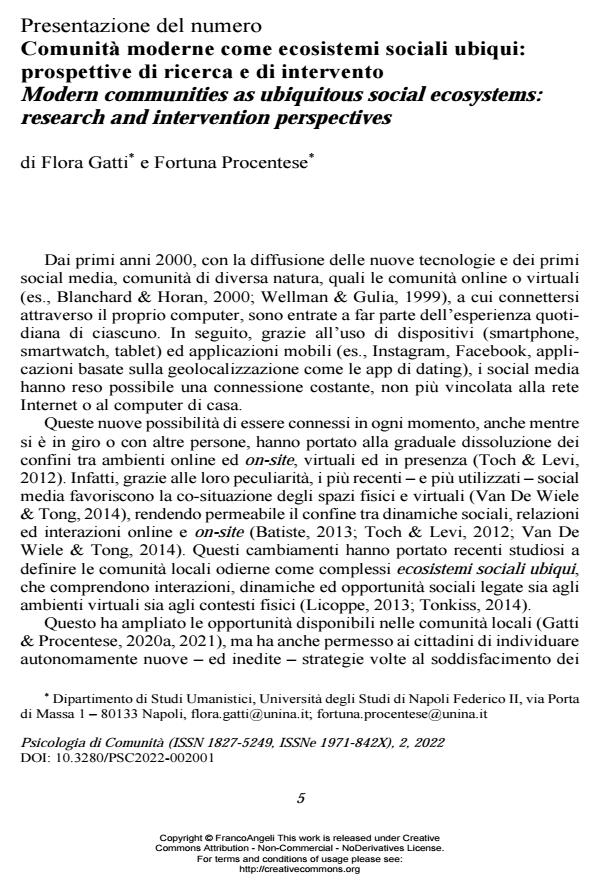Comunità moderne come ecosistemi sociali ubiqui: prospettive di ricerca e di intervento Modern communities as ubiquitous social ecosystems: research and intervention perspectives
Journal title PSICOLOGIA DI COMUNITA’
Author/s Flora Gatti, Fortuna Procentese
Publishing Year 2022 Issue 2022/2
Language Italian/English Pages 5 P. 5-9 File size 136 KB
DOI 10.3280/PSC2022-002001
DOI is like a bar code for intellectual property: to have more infomation
click here

FrancoAngeli is member of Publishers International Linking Association, Inc (PILA), a not-for-profit association which run the CrossRef service enabling links to and from online scholarly content.
Flora Gatti, Fortuna Procentese, Comunità moderne come ecosistemi sociali ubiqui: prospettive di ricerca e di intervento Modern communities as ubiquitous social ecosystems: research and intervention perspectives in "PSICOLOGIA DI COMUNITA’" 2/2022, pp 5-9, DOI: 10.3280/PSC2022-002001